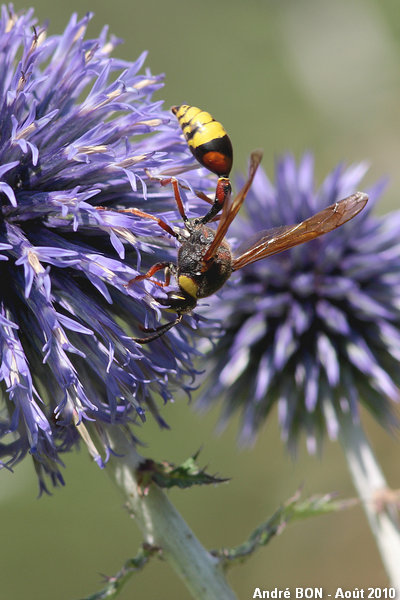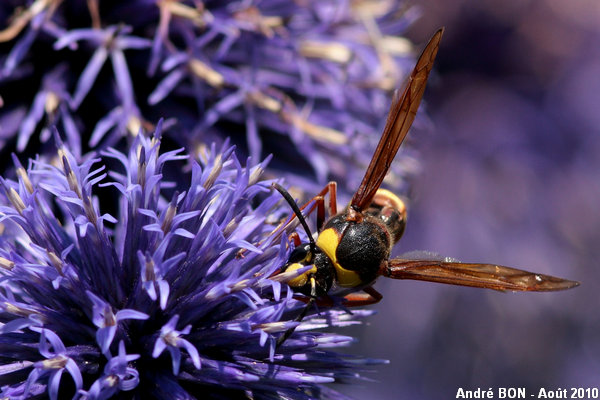

| Great Potter Wasp (Delta unguiculatum (Villers, 1789)) |


|
|
Scientific name: Delta unguiculatum (Villers, 1789) Common name: Great Potter Wasp French name: Eumène unguiculé Order: Hymenoptera Family: Vespidae Wingspan : 20-25 mm, males are slightly smaller than females. Biotope: Places with flowers. Geographic area: Southern Europe east to southern Russia. Egypt. Observation period : June to August. |
The Great Potter Wasp is a solitary wasp. This is the largest member of the Eumeninae subfamily in France. The thorax is attached to the abdomen by a long red and black petiole which is swollen at the rear giving some kind of a bell shape The rear part of the abdomen is yellow with more or less marked black stripes. The abdomen tip is pointed. The square-shaped thorax and the first part of the abdomen are black with reddish patches which are much more visible on females. The front of the thorax shows yellow patches just at the back of the head. The legs are reddish, the antennae are long with a curved tip. The wings are ochre and aligned over the body when at rest. You can often observe adults on flowers where they feed on nectar. The Great Potter Wasp builds some kind of nest with mud and wet sand. It includes several cells which receive one egg each and small caterpillars to feed the larva. |
| [To know more about the Great Potter Wasp] [Next picture] [Top] |

|
I have observed this female Great Potter Wasp on Blue Thistles where it was feeding on nectar. |
| [To know more about the Great Potter Wasp] [Previous picture] [Top] |

|
The Great Potter Wasp is a large size insect which is easy to see with its bright colours and its long petiole. |